“The 5,000 inhabitants of this Quechua-speaking region in Peru's top cocaine-producing valley on Thursday got health care, medicine, eyeglasses and shoes from two mobile hospitals sent by the country's military. Brig. Gen. Jose Galindo said the aid mission to impoverished communities in the valley of the Apurimac, Ene and Mantaro rivers included roughly 200 soldiers, along with ophthalmologists, cardiologists, gynecologists, dentists, obstetricians and radiologists. In Surcubamba, 300 kilometers (186 miles) east of Lima, widower Eustaquio Rodriguez, 86, said he had his hair cut for the first time in almost two years by a military barber. Maria Gavilan, a 52-year-old mother of seven, received a pair of glasses to fight the myopia she has suffered for more than 40 years. “It is the first time an eye doctor has come. There is none here”, she said, referring to Surcubamba, where 87 percent of the people live in poverty and 53 percent suffer from chronic malnutrition. Military officials said ophthalmologists examined more than 300 people and dentists gave more than 400 checkups, mainly to children. The military's Joint Chiefs of Staff has being staging humanitarian missions in the vast and remote cocaine-producing valley since 2013”. – Franklin Briceno via The Associated Press
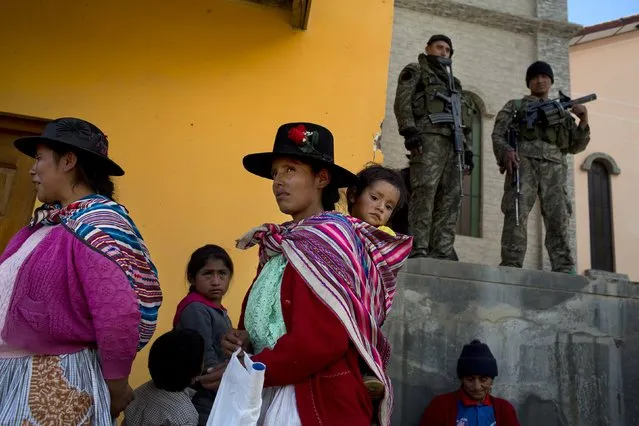
Villagers watch a welcome ceremony for visiting military as soldiers stand guard in Surcubamba, Peru, Thursday, May 21, 2015. The Joint Command of the Peruvian Armed Forces organized a humanitarian mission to Surcubamba, where health care was provided to families from nearby villages in this region called VRAEM, the acronym for Valley of the Apurimac, Ene and Mantaro rivers, where sixty percent of Peru's cocaine originates. (Photo by Rodrigo Abd/AP Photo)
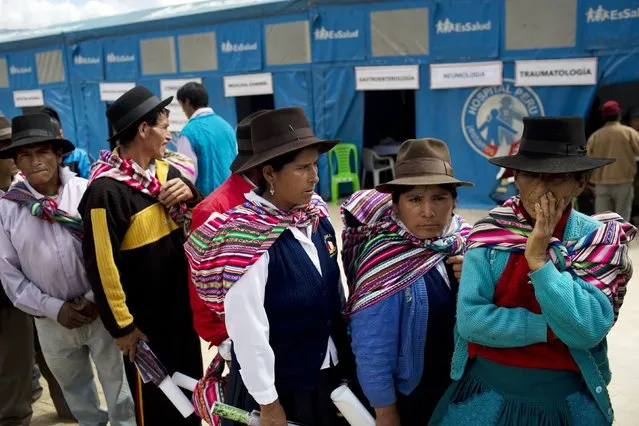
Villagers wait in a line to be attended by doctors in Surcubamba, Peru, Thursday, May 21, 2015. (Photo by Rodrigo Abd/AP Photo)
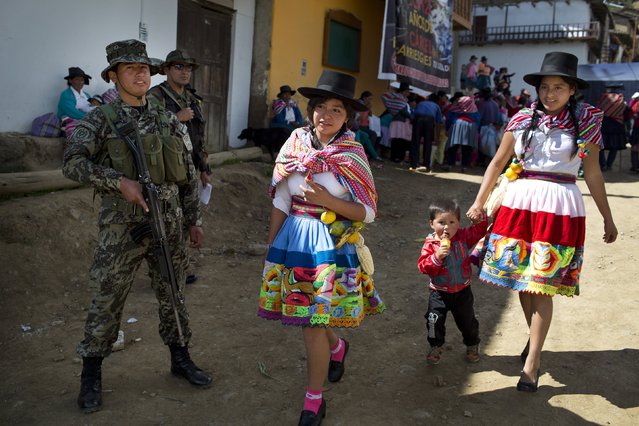
Women walk next to soldiers in Surcubamba, Peru, Thursday, May 21, 2015. (Photo by Rodrigo Abd/AP Photo)
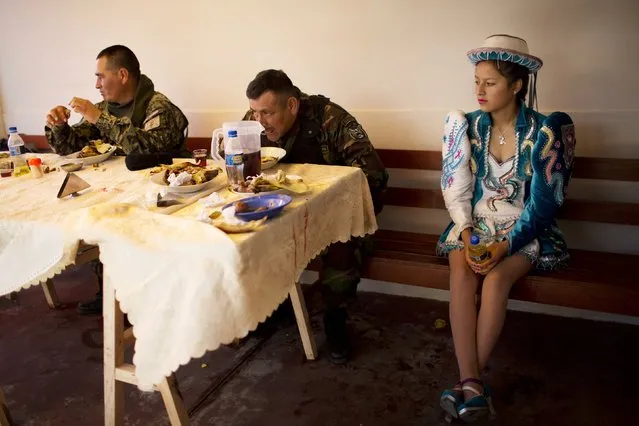
A performer rests as soldiers eat lunch in Surcubamba, Peru, Thursday, May 21, 2015. (Photo by Rodrigo Abd/AP Photo)
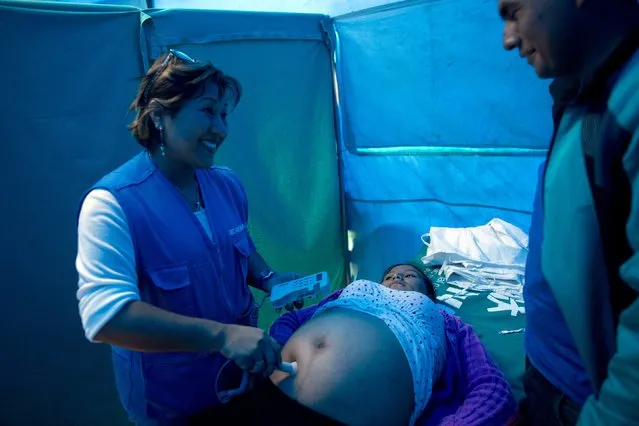
Obstetrician Martina Mantilla listens to the heartbeat of Carmen Rosas' baby during a prenatal check, inside a tent converted into a makeshift medical office, in Surcubamba, Peru, Thursday, May 21, 2015. (Photo by Rodrigo Abd/AP Photo)
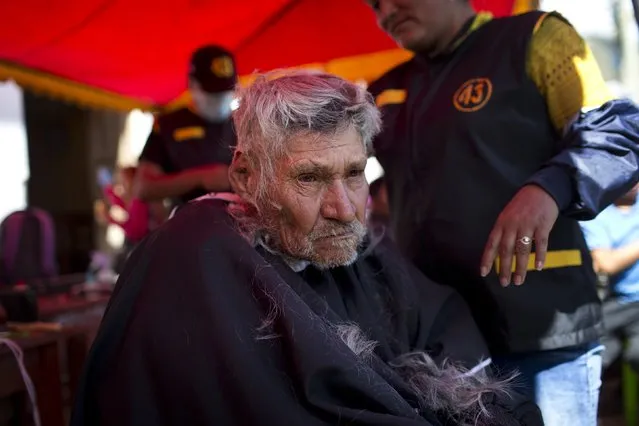
Eustaquio Rodriguez, 86, sits for a free haircut in a tent converted in a makeshift barbershop in Surcubamba, Peru, Thursday, May 21, 2015. (Photo by Rodrigo Abd/AP Photo)
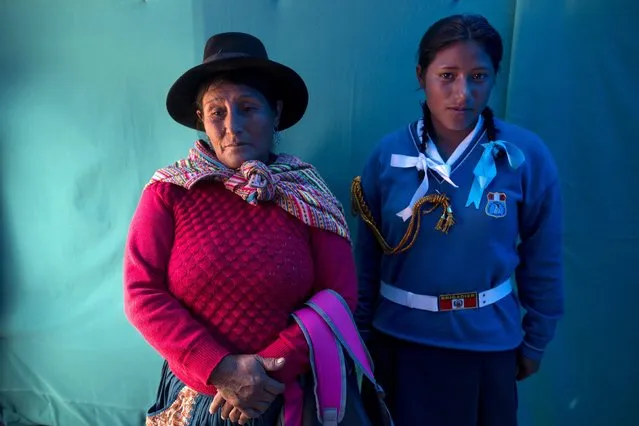
Yoana Inostroza, 17, right, waits with her mother Virtilia Inostroza, 53, to be attended by an obstetrician in Surcubamba, Peru, Thursday, May 21, 2015. (Photo by Rodrigo Abd/AP Photo)
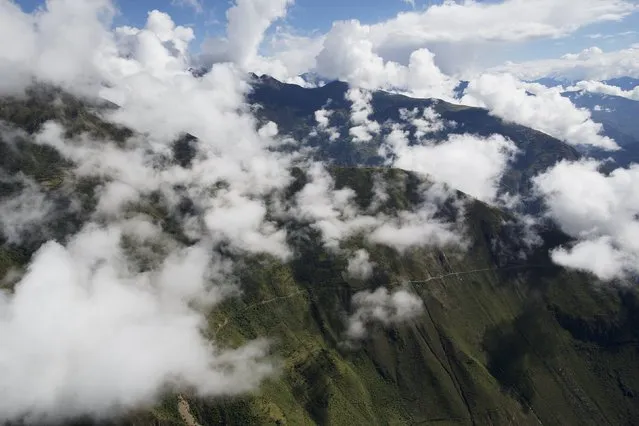
An aerial view of the mountainous terrain seen from a military helicopter, near Surcubamba, Peru, Thursday, May 21, 2015. (Photo by Rodrigo Abd/AP Photo)
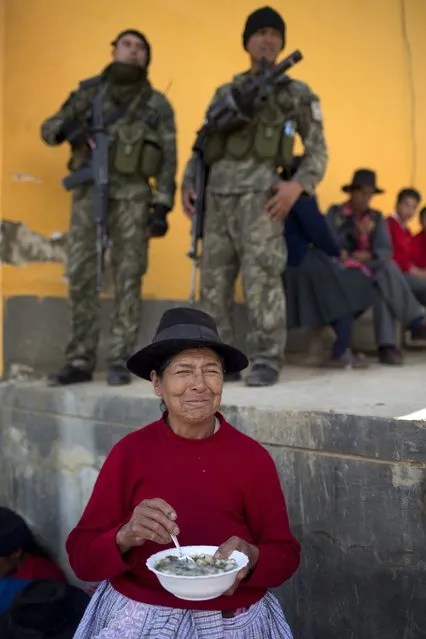
A woman eats lunch as soldiers stand guard in Surcubamba, Peru, Thursday, May 21, 2015. (Photo by Rodrigo Abd/AP Photo)
24 May 2015 09:38:00,
post received
0 comments
